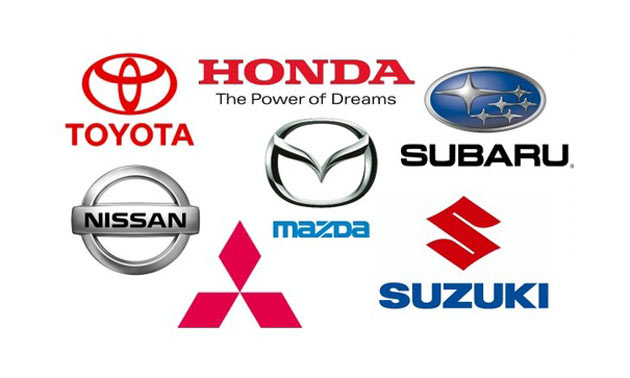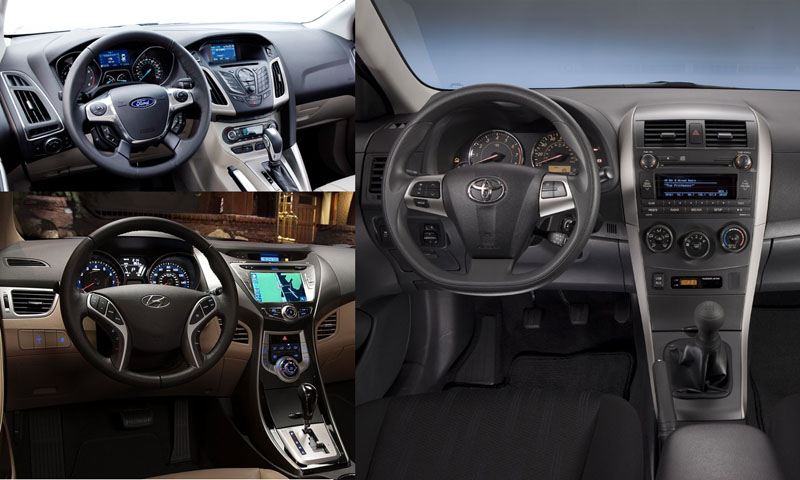The failure of Japan, Inc.

It was a scant few decades ago when an America infatuated with Detroit iron said that the Japanese made lousy cars and that they would never succeed. Today, nearly 40 years after Honda made its first foray into the four-wheeled market in America, those statements are holding more water than ever. After the collapse and revival of the American auto industry, as well as the uprising of the Korean carmakers, the dominant Japanese automakers (Toyota, Honda) are faced with a dwindling competitve edge.
Don’t get me wrong, Japan still makes good cars that people will buy and enjoy for decades to come. But the Japanese left their core values overseas when they decided to focus on gaining market share. Honda – once a paradigm for reliable, fuel efficient, fun to drive cars – has resorted to making boats on wheels. Honda bloated the 8th generation Accord (2008-present) to 194.1 inches in length – over ½ an inch longer than the 1998 Toyota Sienna (yes, that’s a minivan). Car & Driver’s August 2011 issue calls the new-for-2012 Civic “bland, soft, numb” and “alarmingly Lincoln-like.” In other news, company founder Soichiro Honda was heard rolling in his grave…
Honda has also had to deal with a slew of problems, the most of prominent being transmission failures. It started around 1998, when Honda came out with a new 4-speed automatic. In 2001, Acura (split off from Honda in the 80’s) introduced their first 5-speed automatic. Both transmissions are worthless piles of trash. They frequently failed with little warning, leaving families stranded and even causing accidents because of the way they failed. To this day, Honda continues to fix and recall transmissions that they claim were “fixed” years ago.
Luckily, Honda owners don’t have time to worry about their transmissions – the constant squeaks, rattles, and road noise ensures that they can’t even think when the car is moving. I’ve spent literally hundreds of hours chasing rattles in my 3 Hondas – a ‘99 Accord (sold), an ‘07 Accord, and a ‘00 Odyssey (family road trip mobile). My uncle complains of similar rattles in his ‘05 Odyssey, as well as a windshield whistle that was “fixed” under warranty, but came back. The 2007 Honda Fit had a service bulletin issued for a windshield whistle before any were sold in America. That last example is particularly appalling when you consider that the Fit had been sold overseas for five years prior to being sold in North America. Between the reduction in fun-to-drive factor and the increase in problems, Honda has worked hard to soil their own name in America.
Over at Toyota, management has gone completely bonkers. In their quest to conquer market share, they’ve forgotten how to build a car to satisfy the masses. Even without the unintended acceleration scandal that roiled Toyota’s reputation, the vehicles themselves are not evolving for the better. My parents have owned three Camry’s – 1997, 2002, and 2003 – and I’ve had some seat time in the 2007-2011 Camry. Each successive generation of Camry has taken big leaps in space and noise levels, but the interior materials, design and features have fallen below industry standard. Ford and Hyundai have been busy innovating their small car interiors with self parking systems, push button start, heated leather seats, automatic climate controls and navigation systems. Toyota refuses to sell you a Corolla with any of that – in fact, money can’t buy a Corolla with a factory installed CD changer.

Both the Ford Focus (upper left) and Hyundai Elantra (lower left) showcase beautifully executed interiors with high-end features. Toyota “updated” the 2011 Corolla interior (right) with drab colors and uninspired details.
Beyond that, Toyota has no clue how to properly engineer what I call an “energetic” vehicle, which drives fun enough to keep young folks awake but not crazy enough to offend older drivers. They have made some attempt to infuse sportiness by adding S, SE, and XRS trim levels, but largely that has taken them a step backwards. My family has owned both “normal” Camry’s and the SE models. The SE is significantly harsher riding in every situation, but it doesn’t garner any more confidence on twisty roads when compared to the much smoother riding Camry LE/XLE. Even in everyday driving, the throttle and transmission response, the arcade-like steering feel, and the engine/exhaust note all remind you that the SE trim is still a boring Camry. It’s very telling that my 50+ year old gray haired father regularly complains about how badly his 2003 Camry SE rides and drives, but steals the keys to my Accord every time I’m home. Even considering how much Honda reduced the “energy” in their cars, they still have more than Toyota – and that’s saying a lot.
While Honda and Toyota are busy figuring out how to mass produce “good enough,” their competitors have taken advantage of their slacking. Some of their recent achievements:
- Hyundai’s new-for-2009 Genesis sedan was the most awarded car of 2009.
- In 2011, they cleaned up by taking both the International Car AND International Truck of the Year awards (Hyundai owns and shares technology with Kia).
- Hyundai recently won an award for having the highest brand loyalty in the industry.
- Ford’s Fusion was named Motor Trend’s 2010 Car of the Year, while the Hybrid was named Edmunds.com’s Consumers’ Top Rated Hybrid.
- Ford’s Lincoln division also came in first in JD Power’s 2011 Vehicle Dependability Study.
- Chevy’s new Cruze was the best selling car of June 2011.
Considering the failures of Honda and Toyota, Hyundai and Ford have now replaced the Japanese as the brands that I personally recommend when friends and family seek car advice. The way I see it, Honda and Toyota are headed down the same road to failure that American carmakers took several decades ago.

